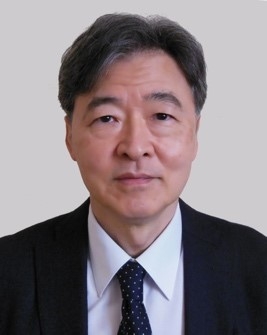About us
Greetings from the Director

Director,
Institute of Photonics Medicine
Vice President for Research
The foundation for the advancement of the Institute of Photonics Medicine
The last year 2024 marked the 50th anniversary of the founding of Hamamatsu University School of Medicine (HUSM) and the birth of the Institute of Photonics Medicine (IPM). The first IPM director, Prof. Masatoshi Kitagawa, contributed significantly to the establishment of the institute. One year later in office, the baton was passed on to me, the second director. I believe my role is to take this heavy responsibility to further enhance research activities for the next generation.
Nearly 10 years ago (in 2013), we declared Hamamatsu as a "Photonics Preeminent City" with the aim of boosting welfare and health in the city using photonics technology by bringing together the wisdom from industry, academia, government, and the private sector. IPM's major mission is to contribute to the realization of a healthy society by identifying medical needs and seeds and contributing to medical care through photonics technology. Former director Kitagawa laid the foundation of the Institute. I feel that my role is to build further the jump platform on which to take the big leap. From there, I wish the next-generation researchers could carry out research in a more multifaceted and international way by creating an environment in which young people can actively engage in collaborative research, by supporting the development of next-generation technologies and devices that meet medical needs with the active participation of optical engineers from industry, academia, government, and the private sector in the medical environment, by supporting the creation of international collaborations with overseas research institutions so that the name of IPM will be recognized around the world, following the example of a world-famous company known as Hamamatsu in the world, and by supporting the IPM to function as one team in order to get large research grants. I would like all young researchers to use their enterprising spirit and broad perspective to make the future of rejuvenated IPM even brighter. I would also like to ask our seniors for their guidance and encouragement.
History and Structure of the Institute of Photonics Medicine and its mission
Our university (HUSM) founded in 1974 opened the Medical Photonics course endowed by Hamamatsu Photonics in 1989. Since then, we established the Photon Medical Research Center in 1991, the Medical Photonics Research Center in 2011, and the Preeminent Photonics Education & Research Center in 2016. These centers have particularly conducted research using photonics technology, which has developed into a strength of research at our university. The establishment of the IPM in 2024 reorganized the Preeminent Medical Photonics Education & Research Center by integrating it with International Mass Imaging Center to enhance our university's photonics medical research. This IPM has a great mission to establish cutting-edge imaging technologies from molecules and cells to humans, and to elucidate unknown life phenomena with the information and the pathology of unmet medical needs such as psychiatric and neurological disorders, and to develop non-invasive diagnostic methods and effective treatments.
The institute consists of five departments. 1) The Preeminent Research Support Department, managing various kinds of advanced equipment within the imaging complex that the university is proud of, supporting in-house research using it, to support animal experiments and the creation of genetically modified animals, and managing the Cancer Biobank Office. 2) Research and Development in Photonics Technology Development, developing less invasive photon technologies such as photoacoustic imaging and fNIRS. 3) The Preeminent Bioimaging Research Department, conducting various imaging research using PET, fMRI, and our original NanoSuit technology, with the aim to contribute to the elucidation of the pathology of diseases. 4) Innovative Diagnostic and Therapeutic Research Development, proceeding research in collaboration with cutting-edge basic and clinical departments in the Faculty of Medicine, under the mission to elucidate the pathology, develop less invasive diagnostic methods, and develop effective treatments using photon-related technologies and advanced genomic technologies for unmet medical needs such as neurodevelopmental disorders, neurological disorders, rare genetic disorders, cancer, and infectious diseases. 5) The Translational Biomedical Photonics Department is responsible for promoting bidirectional translational research from basic to clinical and vice versa, to efficiently implement the research results coming through the departments.
The IPM added the Hospital Lab, which was built in 2024 as this university was selected as one of universities of the "Facility Development Project of Regional Core and Distinctive Research Universities" by the Ministry of Education, Culture, Sports, Science and Technology in 2023, and also housed the Facility for Photon Molecular Neuroscience, which was allowed as the HUSM being a partner university of Fujita Health University for the project of "Center for Psychiatric and Neurological Pathology" within the 2024 Regional Core and Distinctive Research University Strengthening Promotion Project. The facility aims to identify and elucidate the functions of unknown neurofunctional molecules through advanced neuroanatomical approaches using mass imaging and 3D microscopic imaging.
In this way, the IPM will proceed cutting-edge medical research, helping to clarify the causes and pathology of unmet medical needs, and enabling the development and practical application of new diagnostic methods, treatments, and medical devices.

